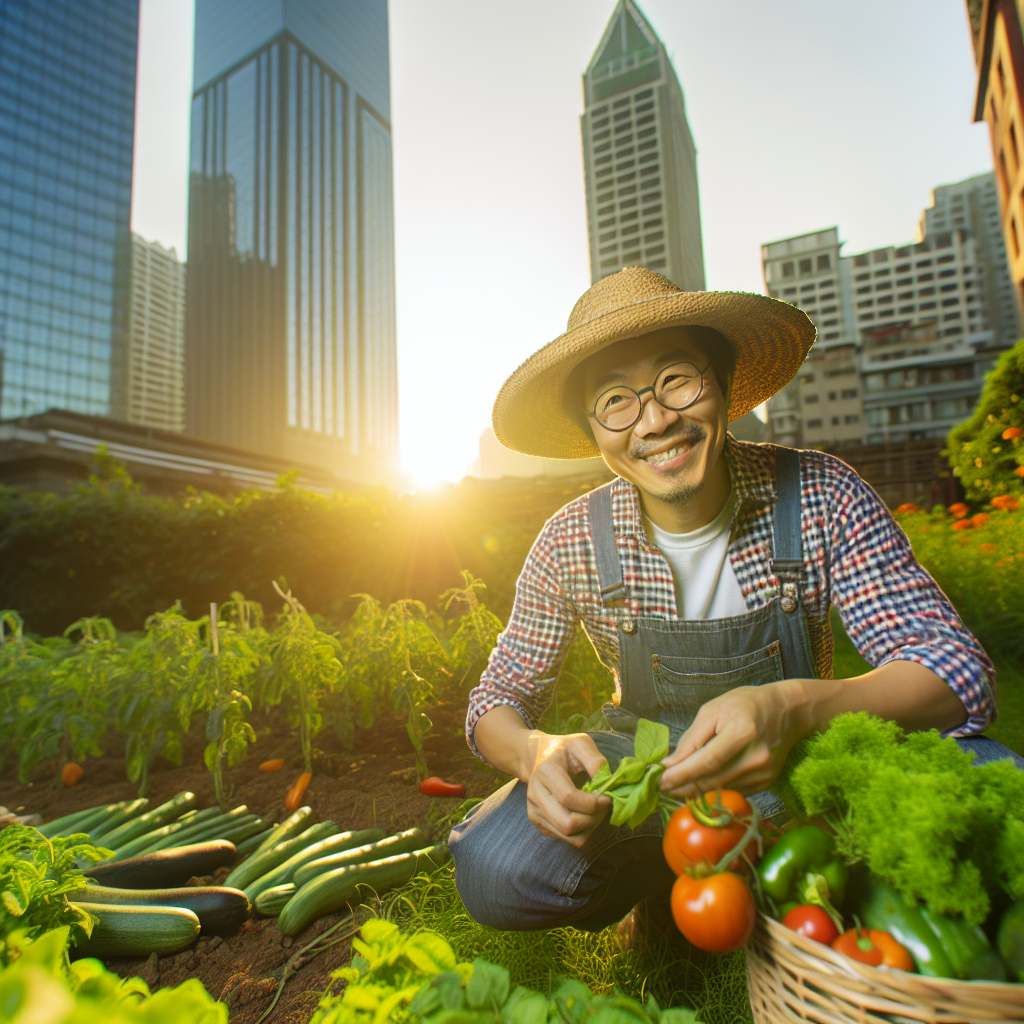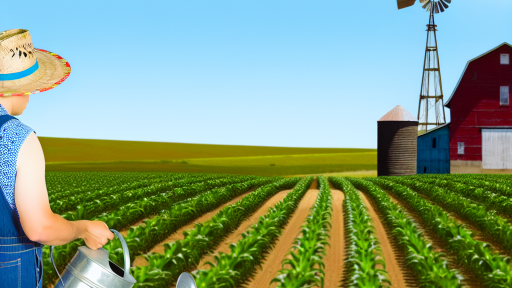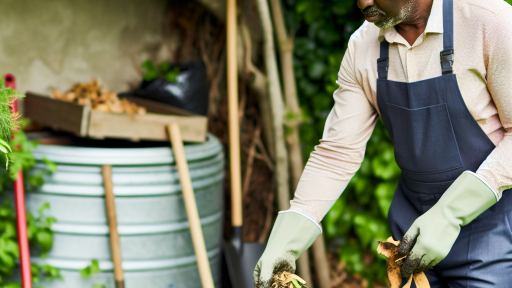Understanding the Ideal Harvest Time for Urban Crops
Importance of Harvest Timing
Knowing the right harvest time enhances crop flavor and quality.
Harvesting at peak ripeness maximizes nutritional benefits.
Timely harvesting reduces pest and disease risks.
Additionally, it prevents crop overripening and waste.
Signs of Readiness
Visual cues often indicate when crops are ready to harvest.
For instance, vegetables may change color as they ripen.
Texture changes also signal maturity in many fruits.
Moreover, some plants produce a specific aroma when ripe.
Varietal Considerations
Different crop varieties have unique harvesting indicators.
- Heirloom tomatoes often need specific color shades.
- Leafy greens should be cut before flowering.
- Root vegetables can be harvested based on size.
Researching specific varieties aids in better harvest timing.
Weather and Seasonal Factors
Weather conditions affect crop maturity rates significantly.
For example, warm weather usually accelerates growth cycles.
Conversely, cooler weather may delay crop readiness.
Urban farmers should monitor local weather forecasts frequently.
Tools and Techniques for Harvesting
Using proper tools ensures a smooth harvesting process.
Transform Your Agribusiness
Unlock your farm's potential with expert advice tailored to your needs. Get actionable steps that drive real results.
Get Started- Sharp knives or scissors help prevent plant damage.
- Harvest baskets keep fruits or vegetables safe during collection.
- Gloves protect hands from thorns or dirt.
Implementing proper techniques enhances efficiency and safety.
Essential Tools and Equipment for Effective Harvesting
Understanding the Basics
Effective harvesting begins with the right tools.
Basic tools include knives, shears, and buckets.
These items help streamline the harvesting process.
Additionally, consider ergonomic options for comfort.
Specialized Harvesting Tools
For larger crops, use specialized tools.
Harvesting baskets can ease transportation of your produce.
Folding crates also save space when not in use.
Tools like garden forks can help with root vegetables.
Protective Gear
Always prioritize safety when harvesting.
Wear gloves to protect your hands from cuts.
Use knee pads to ensure comfort while picking low crops.
Additionally, sun hats shield you from harmful rays.
Organization for Efficiency
Organizing your workspace increases efficiency.
Have a dedicated area for cleaning tools post-harvest.
Sort harvested produce by type to streamline processing.
Consider using labels to identify different varieties.
Maintenance of Tools
Regular maintenance keeps your tools in top shape.
Clean your tools after each use to prevent rust.
Sharpen cutting tools regularly for precise cuts.
Store tools properly to prolong their lifespan.
Techniques for Maximizing Yield in Limited Urban Spaces
Utilizing Vertical Gardening
Vertical gardening maximizes space effectively.
It allows plants to grow upwards instead of outwards.
This approach is suitable for small balconies and patios.
Showcase Your Farming Business
Publish your professional farming services profile on our blog for a one-time fee of $200 and reach a dedicated audience of farmers and agribusiness owners.
Publish Your ProfileAdditionally, it enhances aesthetics while producing food.
Use trellises, wall planters, or vertical frames to support plants.
They can hold a variety of crops, including herbs and vegetables.
Implementing Container Gardening
Container gardening offers versatility in urban environments.
Choose pots that fit your available space and style.
Container size affects soil volume and plant growth.
For optimal results, ensure containers have proper drainage.
Additionally, use high-quality potting mix for best yields.
Try growing plants like tomatoes, peppers, and lettuce.
Planning for Crop Rotation
Crop rotation helps maintain soil health and nutrients.
Plan your garden layout before planting season arrives.
Changing plant families each season can prevent diseases.
This method promotes a diverse and productive garden.
It also enhances the overall ecosystem balance in your space.
Maximizing Sunlight Exposure
Sunlight plays a crucial role in plant growth.
Identify areas in your garden that receive the most sun.
Position taller plants towards the back or center.
Shorter plants should be placed in front for maximum exposure.
Consider using reflective surfaces to increase light availability.
These tactics will help plants thrive throughout the growing season.
Enhancing Soil Quality
High-quality soil is essential for healthy plants.
Test your soil to determine its nutrient levels.
Add organic matter, such as compost, to enrich it.
This improves drainage and supports beneficial microorganisms.
Regularly amend your soil based on crop needs.
Healthy soil leads to thriving urban crops.
Utilizing Hydroponics and Aquaponics
Hydroponics allows soil-less growth for optimal space usage.
This system recycles water and nutrients efficiently.
Additionally, aquaponics integrates fish farming with plant growth.
The fish waste serves as fertilizer for plants.
Both methods can yield crops in limited spaces and promote sustainability.
These innovative techniques enhance urban farming success.
See Related Content: Harvesting Tips for Farm-Grown Mushrooms
Post-Harvest Handling: Best Practices for Urban Farmers
Understanding Post-Harvest Handling
Post-harvest handling is crucial for urban farmers.
It significantly affects the quality of your produce.
Implementing best practices helps in maintaining freshness.
Also, proper handling can extend shelf life.
Immediate Actions After Harvesting
Act quickly after harvesting to prevent spoilage.
Start by removing any damaged or bruised fruits and vegetables.
This step is essential for maintaining overall quality.
Showcase Your Farming Business
Publish your professional farming services profile on our blog for a one-time fee of $200 and reach a dedicated audience of farmers and agribusiness owners.
Publish Your ProfileNext, wash the produce gently to remove dirt and pests.
Use cool, clean water for washing.
Temperature Control Techniques
Keep your produce cool to slow down deterioration.
Refrigeration helps maintain freshness for many crops.
For others, consider using cooling methods such as shade or evaporative cooling.
Monitor temperatures regularly to ensure effectiveness.
Proper Packaging Methods
Use appropriate packaging to protect your produce.
Choose breathable materials to prevent moisture buildup.
Consider using cardboard boxes or biodegradable bags.
Label packages with handling instructions and harvest dates.
Transportation Practices
Implement careful transportation practices to prevent damage.
Secure the load during transport to minimize movement.
Avoid stacking heavy items on top of fragile produce.
Plan routes to reduce transit time without compromising quality.
Storage Solutions
Invest in proper storage solutions for long-term preservation.
Utilize climate-controlled storage for sensitive items.
Organize your storage space to facilitate airflow.
Regularly check stored produce for signs of spoilage.
Regular Assessment and Improvement
Continuously assess your post-harvest processes.
Seek feedback from customers regarding quality.
Use this information to make necessary improvements.
Stay informed about new techniques and technologies.
Join local farming groups for shared knowledge and tips.
Explore Further: Seed Starting Tips For Urban Farmers
Tips for Harvesting Different Types of Vegetables and Herbs
Root Vegetables
Start harvesting root vegetables when they reach maturity.
Check the seed packet for specific timing suggestions.
Use a garden fork to gently loosen the soil around the plant.
Avoid pulling them directly, as this may harm the roots.
Carrots and beets often indicate readiness by size and top growth.
Leafy Greens
For leafy greens, aim to harvest in the morning.
This is when leaves are crisp and full of moisture.
Use scissors or your hands to cut leaves at the base.
Always leave some leaves on the plant for regrowth.
Regular harvesting encourages continuous growth.
Fruiting Vegetables
Fruiting vegetables, like tomatoes and peppers, should be firm to the touch.
Color is also a good indicator of ripeness.
Use pruning shears for a clean cut to prevent damage.
Be mindful of the plant’s health while harvesting.
Overharvesting can stress the plant and reduce yield.
Herbs
Harvest herbs regularly to promote bushier growth.
Showcase Your Farming Business
Publish your professional farming services profile on our blog for a one-time fee of $200 and reach a dedicated audience of farmers and agribusiness owners.
Publish Your ProfilePick leaves at the top, leaving lower leaves intact.
For woody herbs, like rosemary, cut stems just above a leaf node.
Harvest in the morning when the essential oils are strongest.
Store fresh herbs in water to prolong their freshness.
Timing and Tools
Timing is crucial for a successful harvest.
Monitor your plants regularly for signs of readiness.
Utilize specific tools like shears and garden forks for efficiency.
Always clean your tools before and after use.
This helps reduce the risk of disease transfer between plants.
Find Out More: Harvesting Best Practices in Organic Gardening

Sustainable Harvesting Practices to Maintain Soil Health
Understanding Soil Health
Soi health plays a crucial role in urban farming success.
Healthy soil promotes robust plant growth and yields higher crops.
It also supports microbial diversity and ecosystem balance.
Implementing Crop Rotation
Crop rotation enhances soil health by preventing nutrient depletion.
It disrupts pest life cycles, reducing infestations naturally.
By alternating crops, you can introduce beneficial soil organisms.
This practice boosts the overall resilience of your farm.
Adopting Minimal-Tillage Techniques
Minimal-tillage techniques preserve soil structure and reduce erosion.
They promote moisture retention and improve organic matter content.
Fewer disturbances allow beneficial microbes to thrive.
Using cover crops can further enhance these benefits.
Utilizing Organic Amendments
Incorporating organic amendments enriches the soil biologically and chemically.
Compost adds essential nutrients and improves soil texture.
Worm castings boost microbial activity, enhancing soil fertility.
Regular application of these amendments sustains soil health over time.
Practicing Integrated Pest Management
Integrated pest management (IPM) reduces harmful pesticide use.
This practice aligns with sustainable goals, protecting soil health.
By promoting beneficial insects, you can naturally control pests.
Monitoring pest populations helps inform targeted interventions.
Monitoring Soil Moisture
Regular soil moisture monitoring optimizes irrigation practices.
It reduces water waste and protects soil structure.
Implementing drip irrigation can deliver water efficiently.
This ensures plants receive adequate moisture without waterlogging the soil.
Mulching for Soil Protection
Applying mulch protects soil from erosion and temperature fluctuations.
It also helps retain moisture and suppress weeds effectively.
Organic mulches break down, adding nutrients back into the soil.
This practice fosters a healthier growing environment for plants.
Learn More: Container Gardening Setup Tips For Small Farms
How to Schedule Harvest Times to Avoid Waste
Understanding Plant Maturity
Every plant has a specific maturation timeline.
Understanding this timeline is crucial for effective harvesting.
Showcase Your Farming Business
Publish your professional farming services profile on our blog for a one-time fee of $200 and reach a dedicated audience of farmers and agribusiness owners.
Publish Your ProfileResearch your chosen crops’ growth habits thoroughly.
Growing conditions can affect these timelines.
Keep track of maturity indicators for each plant variety.
Monitoring Weather Patterns
Weather significantly impacts harvesting schedules.
Plan harvest dates around expected weather conditions.
Avoid harvesting during excessive heat or rain.
Weather apps provide valuable data for planning.
Check local forecasts regularly to stay informed.
Utilizing a Harvest Calendar
A harvest calendar helps organize your schedule.
Mark important dates, such as planting and expected harvest times.
Review your calendar regularly to make adjustments.
Include notes on crop conditions and weather influences.
This practice minimizes the chances of waste.
Planning for Peak Freshness
Harvest crops at their peak for best flavor and quality.
Early morning is often the best time for harvesting.
Cool temperatures preserve freshness for longer periods.
Use this time to evaluate each crop’s condition.
Plan your schedule to maximize freshness and taste.
Rotating Your Crops
Crop rotation helps prevent soil depletion.
It also allows better timing for harvesting different crops.
By rotating, you create a staggered harvest timeline.
This approach reduces the risk of overwhelming workloads.
Consider planting fast-growing and slow-growing varieties.
Involving Community Resources
Utilize local growers’ knowledge for scheduling tips.
Engage with urban farming networks for advice.
Community gardens offer shared resources for efficiency.
Networking can lead to shared harvest times and events.
Collaborate to reduce waste and improve overall yield.
Engaging the Community: Hosting Urban Harvesting Events
Building Awareness Through Events
Urban harvesting events create excitement within the community.
They educate residents about local food sources.
Moreover, these events promote sustainable practices.
Planning Your Harvesting Event
Begin by identifying suitable locations for the event.
Consider community gardens, parks, or local farms.
Next, determine the best time of year for hosting.
Fall often coincides with the harvesting season.
Engaging Local Volunteers
Reach out to local organizations for support.
Schools, clubs, and non-profits can provide volunteers.
Involve residents by offering incentives for participation.
Free produce samples can encourage attendance.
Promoting the Event
Use social media platforms to spread the word.
Showcase Your Farming Business
Publish your professional farming services profile on our blog for a one-time fee of $200 and reach a dedicated audience of farmers and agribusiness owners.
Publish Your ProfileCreate visually appealing flyers and posters.
Engage local media outlets for additional reach.
Encourage attendees to bring friends and family.
Activities to Include
Organize hands-on workshops for participants.
Teach techniques for efficient urban harvesting.
Incorporate cooking demonstrations with harvested goods.
Games and activities for children can enhance involvement.
Gathering Feedback
Collect feedback after the event to ensure improvement.
Use surveys or informal discussions for insights.
This information can help shape future events.
Encourage attendees to share their experiences on social media.
Additional Resources
Get ready for garlic planting – Organic Farming Magazine For …
Maximizing Production in Small-Scale Flower Farming: Tips for …




